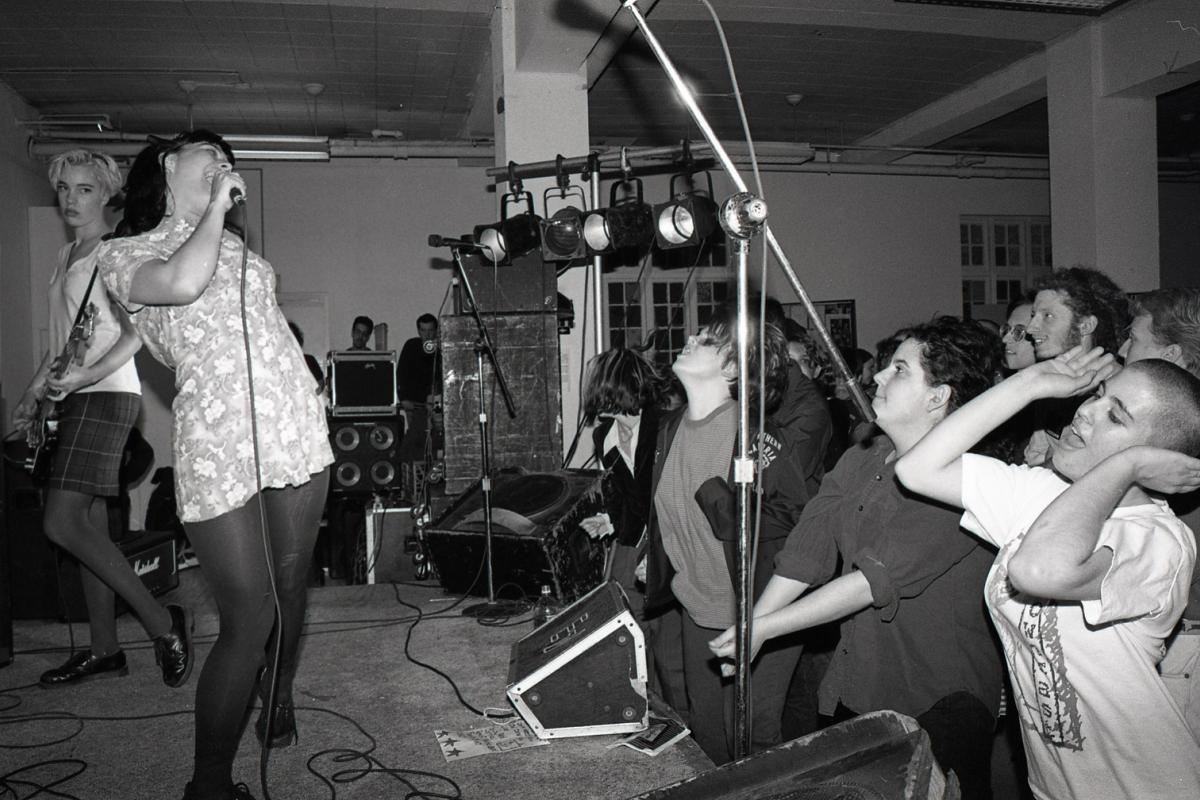When grunge got big in the early 90s and bands like Pearl Jam and Nirvana gave the rebellious youth a voice with their mix of punk, metal and rock, not everyone felt addressed and understood in the same way. Even if all genders listened to grunge, the disillusionment usually came at the concerts: whoever is bigger, louder, takes up more space simply has the better cards at pogen. Girls and young women who did not believe in old gender roles and who were just as angry and enthusiastic about music were marginalized by the dominating demeanor of the young men and felt uncomfortable. In principle, the themes of the texts are universally applicable to the problems of young people, but of course an adolescent woman has different experiences than a young man. As so often, there was a lack of understanding for a problem that you yourself have never been affected by - it is easier to empathize with people when you have experienced something similar. The subversive boys of the 90s vehemently defended themselves against accusations of sexism within the scene because they had a different, more striking idea of sexism than those who experienced it. And of course the young men knew the feeling of powerlessness and exclusion - otherwise they would not have felt understood by the music, but only from their perspective.
Of course, giving in was not an option, the girls were too emancipated and defiant for that.
So a feminist movement emerged in Olympia, Washington, which spread quickly and paved the way for interesting people to this day - the Riot Girl movement. They called themselves girls to show that they didn't feel grown up yet and at the same time to emphasize the strength of being a girl instead of its supposed weakness, spelled grrrl snarling angrily. And Riot is self-explanatory in this context.
'Riot grrrls never die, every girl is a riot grrrl!' became her battle cry.
The bands that provided the soundtrack were most prominently Bikini Kill, Babes in Toyland and Bratmobile; Bikini Kill's Rebel Girl became the movement's anthem. But it wasn't just the lyrics that reflected the feelings, the stage performances also had a new, provocative power. So 'all girls to the front' were asked to have enough space to poke, there were extra concerts where only women were allowed to come and many men didn't understand that it wasn't about hating men, but about giving and taking space. Kathleen Hanna's stage outfits often only consisted of underwear and as a statement against the misogynistic double standard of sexual self-expression she wrote 'slut' on her body. This encouraged many girls not only mentally but also actively to detach themselves from role models that they lived in, to radiate self-confidence and strength not despite but because of their femininity.
This had a long-term influence, for example, on the trendy 'girly' trend of the late 90s, which Blümchen helped shape in Germany and showed that lip gloss and glitter are no contradiction to a cheeky, self-determined appearance. Just like the stylish Spice Girls from UK made Girl Power their motto and acted as role models. Gwen Stefani became an icon for many young women who combined both a love of fashion and a desire for equality. The well-produced girl bands came more and more into focus, because the women of the original grassroots movement Riot Grrrls were comparatively media-shy and didn't want to be commercialized, but wanted to bring about change. The term last went viral in 2012, when the Russian punk band Pussy Riot made a name for themselves with their system-critical performances.
This is how feminism was established in the punk scene, even if there is still a need for it today and sexism has to be discussed further in left-wing circles. But don't worry: Riot Grrrrls never die!

